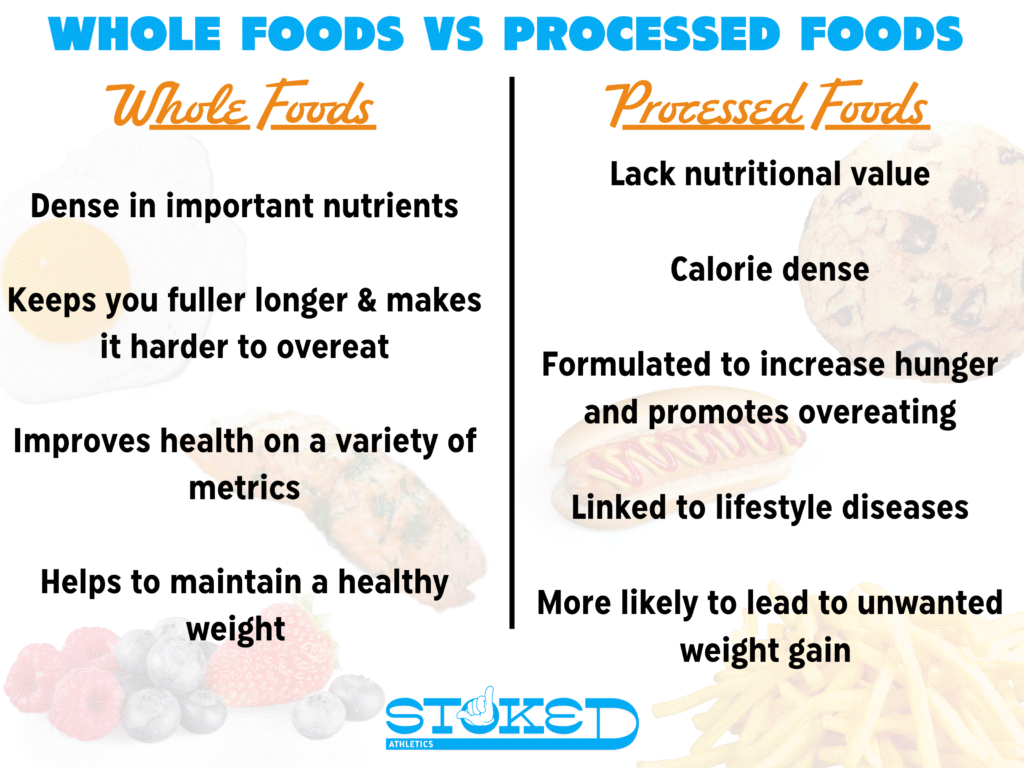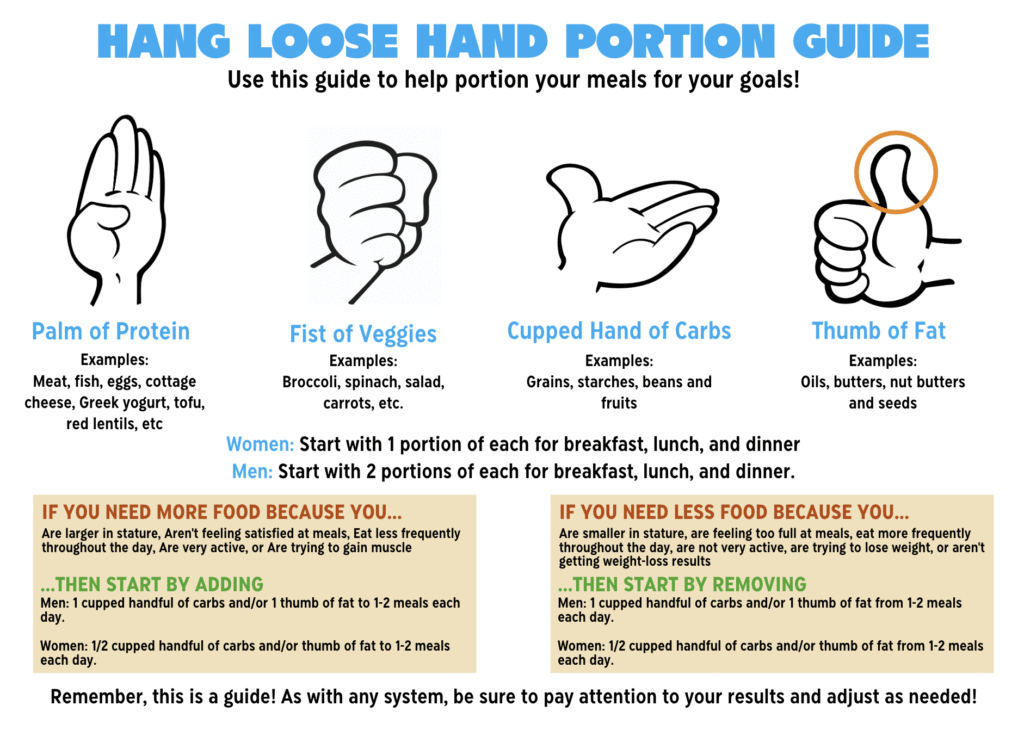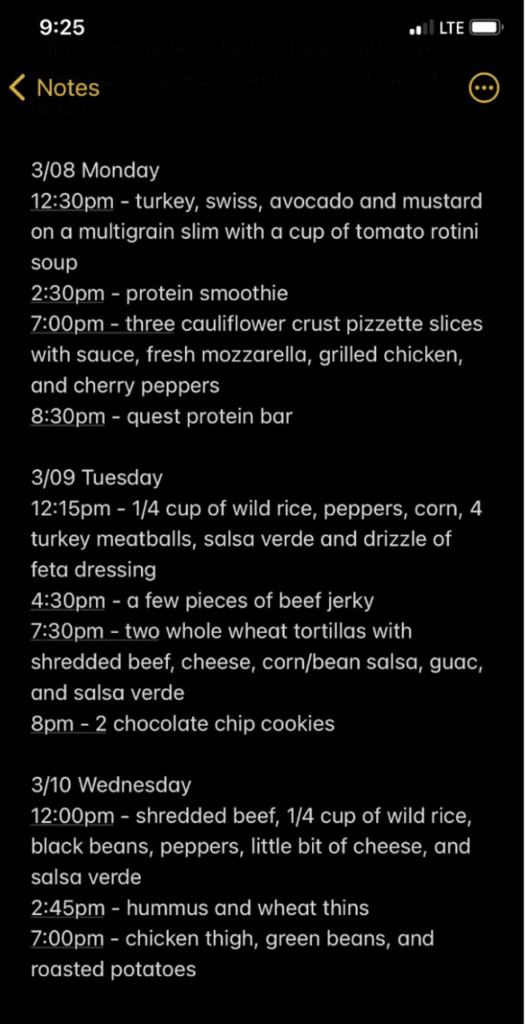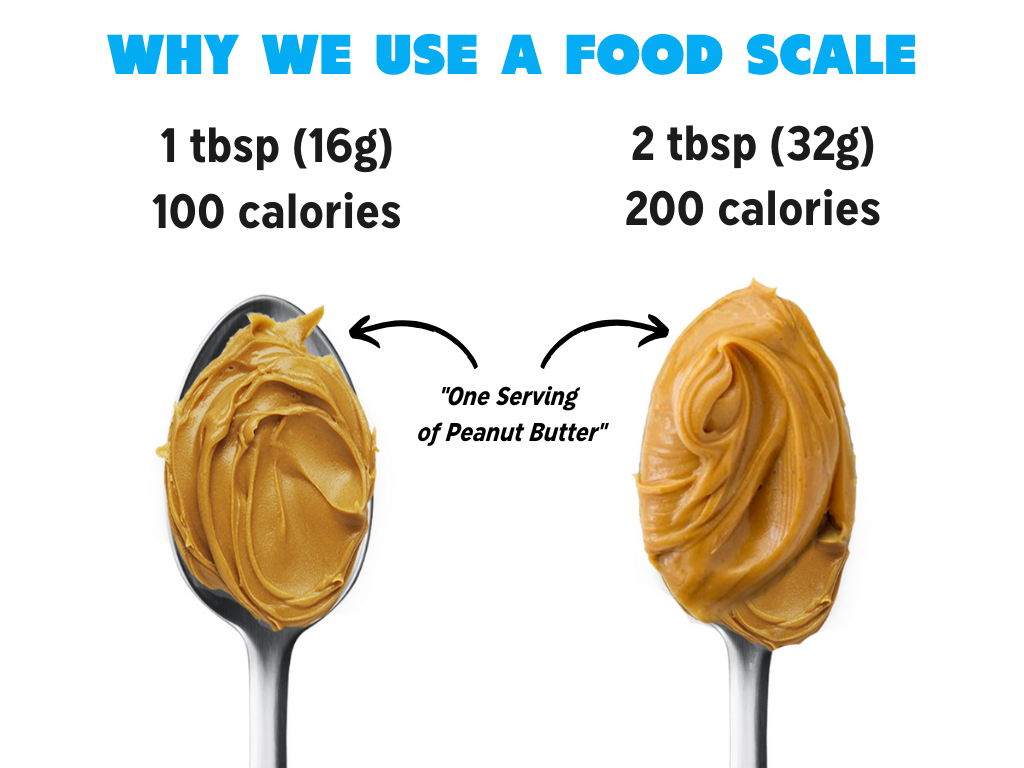One of the biggest misunderstandings is that eating healthy will automatically get us to our goal.
However, eating healthy means a lot of different things to a lot of different people. Eating healthy also doesn't note how many calories we may be eating, which as you'll see, plays a huge role in weight gain, weight loss, and weight maintenance. Eating healthy does NOT inherently mean you’re eating for Fat Loss nor does it inherently mean you’re eating for Muscle Gain.
Healthy Eating CAN be those two things, but it’s important we define what healthy eating is, and then we will talk about how to eat for the different goals.
So What is Healthy Eating
Healthy eating can be defined as a diet primarily composed of eating nutrient-dense whole foods in portions that keep your bodyweight in a healthy range. What’s a healthy range? That’s a conversation between you and your doctor, but we’re sure you have an idea of what that means for you.

Why nutrient-dense whole foods? Whole foods have more of the nutrients that keep our bodily functions working properly. They fill us up more, making it harder to overeat, harder to gain unwanted weight, and improve our health on a variety of metrics.
As we mentioned, different goals require different strategies, but we need to nail down some fundamentals that go across all goals:
- You need to prioritize whole foods - as stated above.
- You need to understand what calories are - even if you don’t plan on tracking or logging them, it’s important to understand what they are and the role they play in our nutrition.
- You absolutely need to be self-accountable - no amount of money you pay any coach will matter if you don’t hold yourself accountable to your nutrition as it relates to your goals. You are the only one in control of what and how you eat.
This will take time and work - Even if your goal is to drastically change your body composition (the goal that requires the most work) but you are new to all of this, it may benefit you to start with the first few strategies to build your habits slowly. Everyone is different, so don’t be discouraged if it takes you some trial and error.
Eating for Health and Wellness
What is it?
A Health and Wellness goal is one that focuses on having more energy, feeling better day to day, and making your doctor happy with the different markers they measure (things like cholesterol, blood pressure, resting heart rate, etc). When training and eating for this goal, you’ll see some progress in the following ones as well (you’ll get stronger and your body composition will change). However, if you want to continue seeing progress with those two, you’ll have to eventually train and eat for those specifically, which we will go over later in this post.
How do we eat for it?
Eating for Health and Wellness is simple on paper - we need to eat mainly whole foods and eat portions that keep us in a healthy weight range. While simple on paper, it can be difficult for people to implement. For some, a change in lifestyle will be necessary in order to stay on track - changes we will go over in a bit. But first, let’s look at our Hang Loose Hand Portion Guide to understand the different categories on our plate, and the portions in which we want to eat them.

There are four main groups on our plate - Protein, Veggies, Carbs and Fats. Each have a place, but we want to portion them correctly. For protein, we use our palm to measure. For veggies, our fist. We cup our hand for carbs and we use our thumb size for fats. The great thing about this method is that our hands are proportional to our body and always with us.
Women can start with 1 portion of each for their 3 meals, and men can start with 2.
If you need more food because you are larger in stature, extremely active (12,000 steps a day on average or more), and/or trying to gain muscle, then you’ll want to start by adding ½-1 portion of carbs and/or ½-1 thumbful of fat.
If you need less food because you are smaller in stature, not very active (5,000 steps a day on average or less), and/or trying to lose fat, then you’ll want to start by removing ½-1 portion of carbs and/or ½-1 thumbful of fat.
For some, this might come easy. Others might have to make some adjustments to their lifestyle. Preparing your own meals instead of eating out or ordering food will be the biggest one for most. That’s not to say you can’t enjoy meals out, but the more you do, the less control you have over how much oils, butter, and other calorie-dense ingredients are added to your food.
Eating for Strength and Performance
What is it?
Strength and Performance goals are pretty self-explanatory. If your goal is to increase strength, or perform at a certain task (runners, rock climbers, athletes, etc) then this is for you!
Not much changes from how we eat compared to our friends working on a health and wellness goal. The only thing that we may want to implement to help our performance is something we call Logging and Lookbacks. This is a great way to stay accountable to yourself without having to track calories or macronutrients.

Logging and Lookbacks consists of us simply logging the food we eat and drinks we consume each day in our notes, and describing their portion to the best of our ability. Then, we look back on the week and compare our notes to how we felt during our workouts, our weigh-ins (if that applies to you) and overall digestion. When we do this, we can easily understand what foods/meals might be throwing us off our performance and goals.
Eating for Body Composition Changes
What is it?
Changing your body composition — losing fat, building muscle, or both — is one of the most common goals we hear. But let’s be real: figuring out how to actually do it can feel like a full-time job. Calories, macros, tracking, food scales, progress pictures… it’s a lot.
The good news? You don’t have to be perfect to see results. With the basics in place — and the right accountability — you can finally make progress that sticks.
Calories and Energy Balance: The Foundation
A calorie is simply a unit of energy. The balance between how many calories you eat and how many you burn determines your body weight:
- Calorie Deficit → Fat Loss (eating less than you burn)
- Calorie Surplus → Muscle Gain (eating more than you burn)
- Maintenance → Stay the Same
If your goal is fat loss or muscle gain, nothing works without this foundation.
Why Macros Matter
Macros — protein, carbs, and fats — are the “makeup” of your calories. They influence not just your weight, but also how you look and feel.
- Protein: Builds and preserves muscle, keeps you full
- Carbs: Provide energy, support performance, help regulate hormones
- Fats: Essential for brain health, hormones, and absorbing vitamins
If you only count calories, you can lose weight — but often at the expense of muscle. That’s where people end up “skinny fat”: lighter on the scale, but without the toned, strong look they actually wanted.
Flexible Dieting: The Sustainable Approach
Diets that cut out entire food groups (keto, no-carb, juice cleanses) can “work” short-term, but they usually crash and burn. Flexible dieting is different:
- 80–90% whole, nutrient-dense foods (lean proteins, fruits, veggies, whole grains, healthy fats)
- 10–20% fun foods (yes, you can have pizza or dessert)
This balance keeps you progressing without burning out — and it’s why people who commit to flexible dieting see results they can sustain long-term.
Setting Your Own Numbers
If you want to get started on your own, here’s a simple framework:
- Find your maintenance calories
- Sedentary (desk job): Bodyweight × 12
- Lightly active: Bodyweight × 13
- Active: Bodyweight × 14
- Very active: Bodyweight × 15
- Adjust for your goal
- Fat loss: Subtract 200–500 calories/day
- Muscle gain: Add 100–200 calories/day
- Break it down into macros
- Protein: ~1g per pound of bodyweight
- Fat: 0.3–0.4g per pound
- Carbs: Fill in the rest of your calories
Tools & Tips for Success
- Tracking app: MacroFactor (our top pick — adapts as you go, use code STOKED for 2 weeks free) or MyFitnessPal Premium
- Food scale: More accurate than cups/spoons and teaches portion sizes
- Progress pictures & measurements: Show changes the scale can’t
- Weigh-ins: Look at weekly averages, not daily swings
- Track the “little things”: Oils, bites, and snacks add up fast

Common Pitfalls to Avoid
- Measuring by volume instead of weight
- Using vague entries (“1 medium banana”) instead of grams/ounces
- Adding back “exercise calories” from your app
- Eating out too often without accounting for it
- Forgetting to track bites, tastes, and cooking oils
The Truth: This is a Huge Undertaking
Now you can see why so many people struggle to make progress on their own. It’s not just about “eating healthy” — it’s about hitting the right balance of calories and macros, doing it consistently, and adjusting over time.
Yes, you could take all this info and start tracking today. But if you’ve never done this before, it’s easy to get overwhelmed, frustrated, or spin your wheels without seeing the results you’re after.
That’s why the best next step is working with a coach.
Your Next Step
If you’re ready to make a serious change and want the highest level of support, join Project Hot Damn — our 12-week, high-accountability program where we guide you step-by-step, meet with you weekly, and keep you locked in until you reach your goal.
If you’re already a Stoked member and want clarity on your next steps, book a Momentum Meeting with your coach. We’ll take what you’ve learned here and turn it into a plan that’s built for you.
You don’t have to figure this out alone — let’s do it together.
There you have it! Our Nutrition Overview. We understand that this information is a lot. But it is a necessary starting point for you to understand how nutrition plays a role in our goals. Remember, the biggest thing is going to be consistently working hard at getting better with our nutrition. You will slip up. There will be times where it gets frustrating. And you will fall off track. What matters most is continually trying to fo better, asking great questions, and not giving up.



